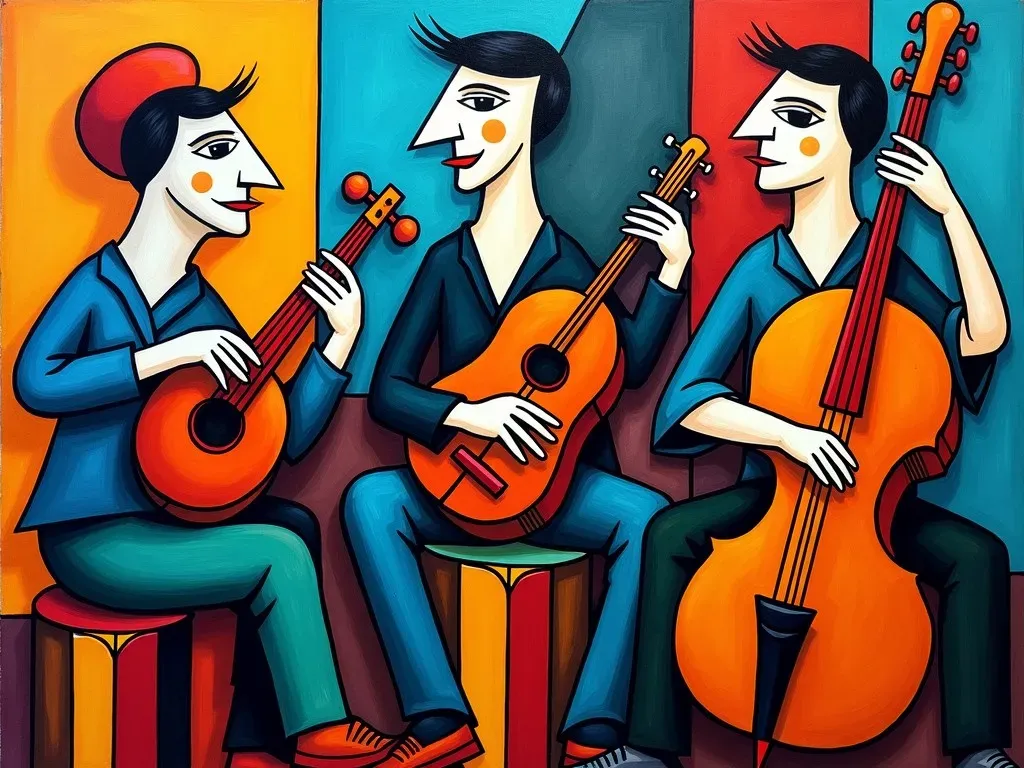Pablo Picasso, a transformative figure in the landscape of modern art, is widely celebrated for his distinctive approach in creating masterpieces known collectively as Picasso pinturas. His legacy is defined by an avant-garde vision and unyielding experimentation, resulting in an extensive collection of oil paintings, sketches, and sculptures. Through different stages of his artistic life, Picasso pioneered styles that shaped modern art, making him one of the most influential artists of the 20th century.
The Artistic Evolution of Pablo Picasso
From his early days as a prodigious child artist to his later stages characterized by Cubism, Picasso’s oeuvre is marked by profound stylistic evolution. Below is a table summarizing the key periods and their notable characteristics:
| Period | Years | Characteristics | Notable Works |
|---|---|---|---|
| Blue Period | 1901 – 1904 | Monochromatic blue palette symbolizing despair | The Old Guitarist, La Vie |
| Rose Period | 1904 – 1906 | Warm colors and themes of love and joy | Family of Saltimbanques |
| African Art | 1907 – 1909 | Influences from African sculpture and art | Les Demoiselles d’Avignon |
| Cubism | 1909 – 1919 | Abstract forms and fragmented perspectives | Violin and Candlestick |
| Surrealism | 1920s – 1930s | Dream-like scenes and elements of surprise | Guernica, Weeping Woman |
| Neoclassicism | 1917 – 1930s | Emphasis on classicism and structure | Three Musicians |
These diverse phases represent just a fragment of Picasso’s extensive career, which encompasses an estimated 13,500 paintings and 100,000 prints and engravings throughout his lifetime.
Picasso Pinturas: Themes and Symbolism
Picasso’s work consistently addressed themes of human experience, from the depths of melancholy to exuberant love. His paintings often featured recurring motifs such as:
- Maternité: Celebrating motherhood and feminine forms.
- The Bull: A symbol of strength and vitality.
- The Guitar: Representing harmony and passion.

Notable Works of Picasso’s Pinturas
When discussing Picasso pinturas, several works stand out as iconic representations of his innovation and skill. Here are some of the most significant paintings that showcase his brilliance:
-
Guernica (1937)
An anti-war mural, Guernica remains one of Picasso’s most powerful and politically charged works. It depicts the suffering of individuals as a response to the bombing of the Basque town during the Spanish Civil War.
-
Les Demoiselles d’Avignon (1907)
A groundbreaking painting that signifies the birth of Cubism. The work features five women in a disjointed composition, challenging conventions of representation in art.
-
The Weeping Woman (1937)
This painting symbolizes the anguish and suffering of war, featuring distorted forms and a vivid color palette to evoke emotion.
-
The Old Guitarist (1903-1904)
This piece from Picasso’s Blue Period encapsulates themes of melancholy and human suffering, showcasing a deep emotional resonance.
-
Three Musicians (1921)
An exemplary Cubist work that employs geometric shapes and a vivid color scheme to illustrate a lively musical trio.
FAQs about Picasso Pinturas
What is the significance of Picasso’s Blue Period?
The Blue Period, which ranges from 1901 to 1904, is notable for its monochromatic blue tones and themes of isolation, reflecting Picasso’s emotional turmoil after the death of his friend Carlos Casagemas.
How did Picasso contribute to Cubism?
Picasso, alongside Georges Braque, co-founded the Cubist movement which revolutionized European painting by representing subjects from multiple viewpoints, creating abstract forms that challenged conventional depictions of space.
Which picasso paintings are considered most valuable?
Art collectors and galleries consider works like Les Demoiselles d’Avignon and Guernica to be among Picasso’s most valuable due to their profound cultural significance and innovative styles.
Where can I find more information about Picasso’s works?
For further exploration of Picasso’s masterpieces, visit WikiArt which houses an extensive collection of his artworks along with details on their historical context and significance.
Conclusion: The Enduring Legacy of Picasso Pinturas
Picasso’s exploration of forms and self-expression led to an unprecedented influence on the realm of modern art. His pinturas continue to resonate, encapsulating the myriad complexities of the human experience. As we delve into the world of Picasso, we not only appreciate his artistic genius but also engage with the universal themes that his art reflects, making his paintings timeless treasures that speak across generations.

In essence, the oeuvre of Picasso, defined by his diverse obras and evocative cuadros, leaves an indelible mark on the history of art, inviting new interpretations and appreciation long after his passing.
